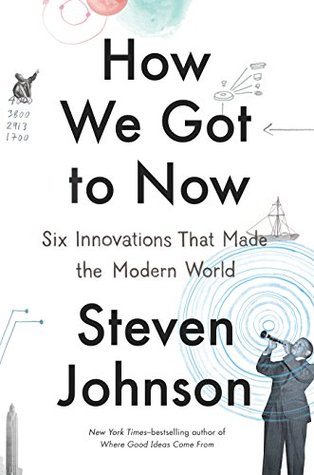More on this book
Community
Kindle Notes & Highlights
Read between
January 19 - January 20, 2019
entered the adjacent possible
Some new tool comes along to share or transmit sound in a new way, and again and again its inventor has a hard time imagining how the tool will eventually be used. When Thomas Edison completed Scott’s original project and invented the phonograph in 1877, he imagined it would regularly be used as a means of sending audio letters through the postal system. Individuals would record their missives on the phonograph’s wax scrolls, and then pop them into the mail, to be played back days later. Bell, in inventing the telephone, made what was effectively a mirror-image miscalculation: He envisioned
...more
The first transatlantic line that enabled ordinary citizens to call between North America and Europe was laid only in 1956. In the first configuration, the system allowed twenty-four simultaneous calls. That was the total bandwidth for a voice conversation between the two continents just fifty years ago: out of several hundred million voices, only two dozen conversations at a time.
Eventually, the antitrust lawyers in the Justice Department worked out an intriguing compromise, settled officially in 1956. AT&T would be allowed to maintain its monopoly over phone service, but any patented invention that had originated in Bell Labs would have to be freely licensed to any American company that found it useful, and all new patents would have to be licensed for a modest fee. Effectively, the government said to AT&T that it could keep its profits, but it would have to give away its ideas in return. It was a unique arrangement, one we are not likely to see again. The monopoly
...more
John Leal’s
In this sense, the transformative ideas and technologies that came out of places such as Bell Labs and Xerox-PARC have their roots in Edison’s workshop. Edison didn’t just invent technology; he invented an entire system for inventing, a system that would come to dominate twentieth-century industry.
His greatest achievement may have been the way he figured out how to make teams creative: assembling diverse skills in a work environment that valued experimentation and accepted failure, incentivizing the group with financial rewards that were aligned with the overall success of the organization, and building on ideas that originated elsewhere.
If we think that innovation comes from a lone genius inventing a new technology from scratch, that model naturally steers us toward certain policy decisions, like stronger patent protection. But if we think that innovation comes out of collaborative networks, then we want to support different policies and organizational forms: less rigid patent laws, open standards, employee participation in stock plans, cross-disciplinary connections.
Most innovation happens in the present tense of the adjacent possible, working with the tools and concepts that are available in that time.


